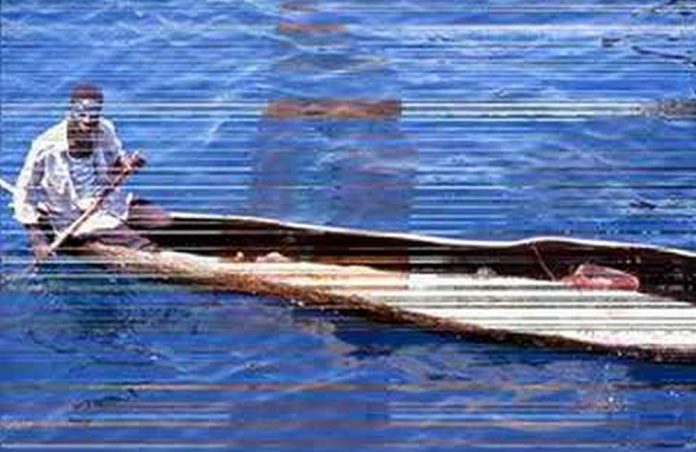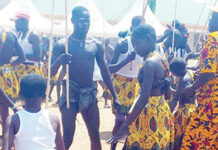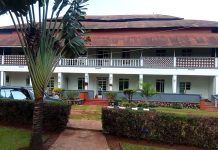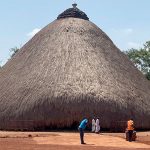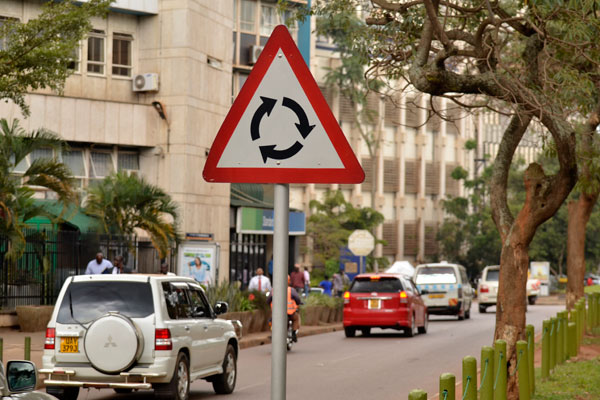Like a treasure, it stays shy away from the buzzing Gulu town. Many know her as the 140-year-old scenic setting where Senegalese-American R&B superstar Akon shot the video for his song Mama Africa in July 2008. The four-minute video attempts to recapture the agonizing crucifixion that the Arab slave traders subjected their captives to between the mid-18th century and the end of the 19th century. This is Fort Patiko.
I can never forget our arrival at her bushy parking lot, which is a block from its gate-less entrance. We were welcomed by Salvatoria Oringa, the calm caretaker of Fort Patiko. He suggested we take a stroll around the two-kilometer-long pits surrounding the fort. The pits, which measure 16ft in depth and 16ft in width, were dug to make it impossible for slaves to escape from the fort — just in case they beat its tough security deployment.
As we advanced, we were swallowed up by towering wild grass and shrubs. By the time we maneuvered our way through, our clothes were covered with blackjack needles whose sharp tips pricked us mercilessly. We were also not spared by the thirsty mosquitoes in the pits.
The walk
Oringa said this humiliating walk was purposed to give us (tourists) a pinch of “the walk to oppression”, that the slaves endured as they trudged thousands of miles to Fort Patiko from different parts of central and East Africa.
Following these words, dead silence fell over our group, as odd imaginations going back to the slaves’ days filled our minds. Unlike us, who were fully dressed, the slaves were always stripped of their clothes.
Because there were no defined roads at the time, they were made to walk for miles in such vegetation, not to mention impenetrable forests which were often habitats to deadly animals.
When Oringa noticed we were getting carried away by these emotions, he was quick to re-route our attention to more adventure at the fort. In a hoarse voice, he asked us to follow him to the heart of the fort and there we found three roofless doubled-roomed houses built exclusively with sedimentary rocks and cement.
They were built on a low rocky hill, so the Arab architects saw no need to cement the floor. In fact, they made the most of this location by polishing the rocky floors smoothly, after which they creatively made striking inscriptions on it to give its occupants a feeling of home in this otherwise isolated setting.
“The roof was made out of thatch, so the houses enjoyed a chilled shade whose temperatures compare to that of today’s first-class air-conditioned suites,” Oringa explained.
Adjacent to these houses is two towering rocks at whose base there are dug-out caves that used to house the slaves. However, unlike the slave trader’s houses which were spacious and well ventilated, I hardly found a thing to admire about the caves.
It appears like more emphasis was put on digging them horizontally inwards than vertically, just like coal mines. Their height is about three feet high meaning the occupants (the slaves) could only get inside by crawling on their bellies. The cave was always jammed to capacity because accommodation was not enough for the hundreds of slaves who were held hostage here.
Tales of death
Oringa explained that from time to time, the slaves would be assembled at the fort’s sloppy compound where the beautiful, healthy, and muscular ones would be separated from the ugly, sick, weak and skinny.
The selected lucky ones would be dispatched for the Egypt and Sudan slave markets where they would be sold off to slave markets in the present-day Republic of South Sudan like merchandise. The unfortunate rejects who could not fetch high prices on the market would be executed by firing squad at the open torture chambers. “They were not set free because the traders feared that they would mobilise the local communities to fight off their cold-blooded Arab masters/traders,” Oringa added.
In a move to make the executions more entertaining, trumpeters would climb up the 18ft rock which overlooks the torture chambers. Up there, they would blow aloud trumpets to cheer the executors as they did their job. After these slaves were killed, their corpses were never given a decent burial. Instead, the bodies would be dumped in the pits surrounding the Fort where vultures would move in to finish the job.
All over the compound, one can observe sharp cuts on the rocks and Oringa explained that these impressions were made by the axes which were used to behead the slaves. “The lucky ones who survived the ax, were worked like donkeys yet fed on little food. Men were usually tasked with digging out more caves for accommodation while women did domestic chores like grinding tones of millet — sometimes till their hands bled.”
Locals believe that though slave inhumanity at Patiko happened centuries back, the spirits of those killed still haunt the fort. Simon Olweny, a resident in the neighborhood of Patiko claims that the nights are punctuated with wails of the ghosts of the slaves who are often heard pleading for their lives to be spared.
The sun shines at last
By the 1840s, it was impossible to maintain a deaf ear to cries against slavery. It was around this time that Sir Samuel Baker, an abolitionist adventurer, and representative of the Egyptian Khedive arrived in Acholi land.
With his band of Nubian fighters, he fought off slave traders from the fort around 1870 and took it over as a station base for his campaign. The same fort was later used by Charles Gordon who replaced Baker as Governor of the Equatorial Province and later by Emin Pasha. It was later used as a prison by the colonial government before falling into disuse for many years after independence.
Other tour activities at Patiko
In other news, Fort Patiko is beautiful from end to end, with amazing scenery which offers great photography. It boasts of lots of rocks that slaves were made to curve into models of different creatures such as sharks, the map of Africa, Lake Victoria and human heads among others.
The hilly fort also has antiquities such as the grinding stones that the slaves used for grinding millet. Florence Baker, whom the abolitionist had rescued from a slave market in present-day Bulgaria, left inscriptions of the Holy cross on the rocks at Patiko. Exploring the old fort gives one a feel of a day in the life of a slave.
How to get there
For someone traveling on a shoestring budget, you need about sh150,000 to tour Fort Patiko. One way bus fare to Gulu is sh25,000. Fort Patiko is about 50 minutes’ ride from Gulu on boda boda and costs between sh4,000 and sh15,000. The entrance to the Fort is sh10,000.
Unfortunately, there is no accommodation and there are no restaurants around the fort. Tourists are advised to bring their requirements such as food, airtime, water among others.
Budget accommodation facilities around Gulu town range from sh15,000 to sh70,000 per night, while luxurious facilities range between sh60,000 and sh200,000 per night.

